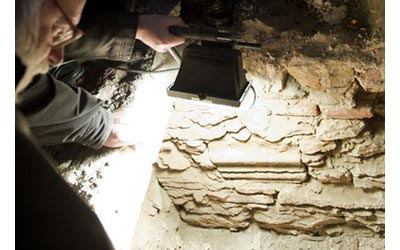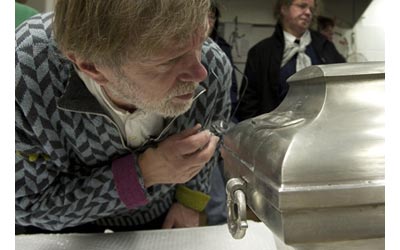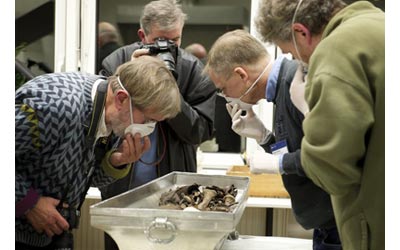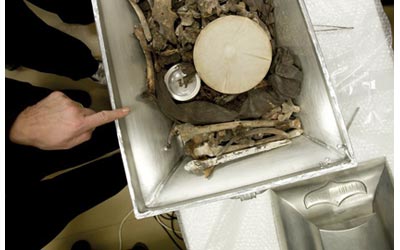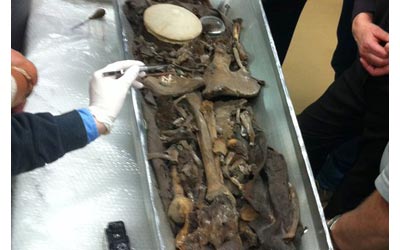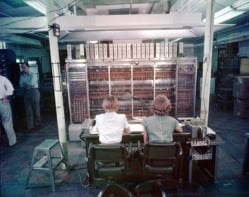The clock is ticking for a team of scientists from Denmark who have until Friday to examine the remains of Tycho Brahe, before the famous astronomer is reburied at his crypt in Prague. Having exhumed the coffin yesterday, the researchers told physicsworld.com they have taken his body back to the project’s headquarters at Aarhus University where they will conduct a series of tests on the remaining bones and tissue.
“It’s research, research, research, and not much sleep,” says Svent Mogensen, the project’s head of communications. The need for urgency is because the Czech authorities have insisted that the remains are returned to Týn Church by Friday. “It has taken us 10 years to get permission for this study,” says Mogensen, comparing the process to The Trial by Franz Kafka.
Born in 1546, Brahe is considered to be the founder of modern observational astronomy. His meticulous observations of the night skies challenged the Ptolemaic view that the universe and its celestial bodies were unchangeable. But the details surrounding his sudden death in 1601 have remained shrouded in mystery.
A fiery character
Brahe was at the time based in Prague, where he had been appointed the official imperial astronomer. He had moved to the city in 1599 following a disagreement with the new Danish King and he quickly became a central scientific figure in the lands of Bohemia and Moravia. But within two years of his arrival in Prague, Brahe was dead – attributed to a bladder infection. One frequently quoted story links the ailment with Brahe’s refusal to break court etiquette by going to the toilet during an event.
However, tests carried out in the 1990s on samples of Brahe’s moustache and hair – obtained during a previous exhumation in 1901 – revealed unusually high levels of mercury, leading to theories of poisoning and even murder. In the 16th century, it was not uncommon to take mercury-based medicines for the treatment of pain. With this latest analysis, the Aarhus University researchers hope to shed more light on this affair and glean more information about Brahe’s general health and physical condition.
“No measurement data or photographical details exist from [the first exhumation], only physical descriptions of the skeletal remains. We can now supplement these with a number of analyses, so you could say that we are completing the investigation that was begun in 1901,” says medieval archaeologist Jens Vellev, leader of the project at Aarhus University.
Problems with the wife
Vellev and his team spent yesterday removing the coffin, made from tin and measuring 1.3 m in length, from its crypt at Týn Church in Prague. They discovered two jars in the coffin – one containing a sample of skull and the other containing what they believe is brain tissue, although the quality of the samples is not yet fully known. Vellev’s team also attempted to exhume the remains of Brahe’s wife, who was buried in the same crypt, but are experiencing difficulties as her wooden coffin collapsed during the operation.
Last night, the researchers transported the coffin to Aarhus University where they have begun to examine the remains through a series of tests including computed tomography (CT) scanning and DNA testing. They will also use particle-induced X-ray emission (PIXE), which involves firing protons at a sample and then measuring the X-rays emitted by specific elements excited within the material, with the energy of the X-rays identifying the elements in question.
The researchers intend to publish preliminary reports by Christmas, with a view to publishing a book by late 2011.
